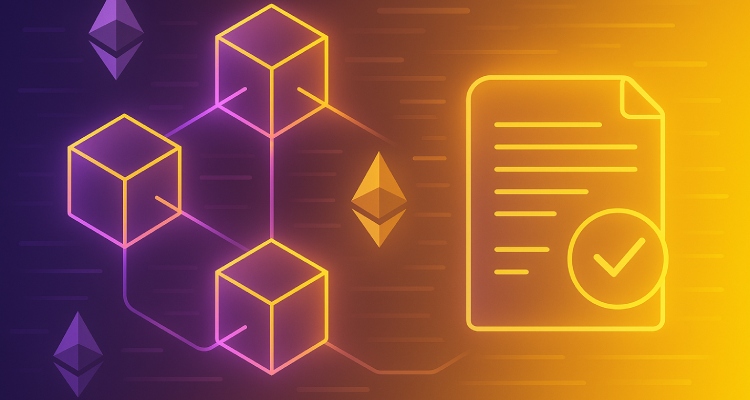
One of the ways in which a quick implementation of blockchain technology can resuscitate agreements and transactions is smart contracts. They are basically self-executing contracts with the terms of the agreement between buyer and seller being directly written into lines of code. Unlike the conventional contracts that require a third party like a lawyer or a notary for enforcement, smart contracts are deployed on the blockchain network and operate automatically, thus enforcing the concept of trust, transparency, and efficiency.
Grasping the concept of smart contracts is imperative since they act as building blocks for a majority of blockchain applications apart from cryptocurrencies, including finance, supply chains, and digital identity. This article will provide an insight into what smart contracts are, how they operate, and what benefits and impediments currently come along with them.

Smart contracts are computer programs stored on a blockchain. They execute when certain stipulated conditions are met. It is like digital "if-then" clauses that automatically enforce rules and apply agreements. For example, a simple payment smart contract could say: "If Alice sends 1 Bitcoin to this contract, then release the service to her."
Once deployed, smart contracts living on the Ethereum blockchain cannot be changed: a consensus would have to be agreed upon by the whole network, and this feature protects the contract from fraud and manipulation.
Here is a simplified flow of how they operate:
The blockchain being decentralized implies that there is no central authority to control the smart contract. Such a setup adds another layer of trust.
Smart contracts accrue certain advantages over traditional agreements or centralized systems. These advantages have made contracts popular in sectors such as DeFi, real estate, insurance, and supply chain management.
Since smart contracts automatically execute their functions, they need no manual processing. Hence, they save time and money otherwise spent in the process of transactions or contract enforcement.
All parties to the contract have full transparency as the contract code and transaction history are publicly stored on the blockchain. This transparency creates trust between even strangers.
Thanks to the cryptographic security of Blockchain, smart contracts are tamper-proof. From the time of deployment, there would be no way any party could alter the conditions of the smart contracts without the consensus of the entire network, thereby ensuring no party would ever indulge in fraudulent activities.
Execution of contracts through automation limits the scope for errors that may occur due to human errors in manual working.
Smart contracts operate over the internet and as such cannot be restricted by territorial or jurisdictional definitions, enabling easy international contracts.
These most promising distributed agreements present certain drawbacks and limitations.
Because the smart contract(s) are code, any bugs present in the contract or vulnerabilities present in its implementation can be exploited. Given that contracts are immutable, it is either difficult or costly to fix issues discovered after deployment.
The legal status of smart contracts is still an area of ongoing development. Many jurisdictions still refuse to enact legislation that recognizes the contracts as legally binding documents, creating uncertainty.
Writing security- or efficiency-sensitive code usually requires technical skills, thus limiting adoption from the non-technical users.
Executing smart contracts on popular blockchains, such as Ethereum, can be very expensive due to network fees (gas fees), especially in times of surge demand. Performance topologies may indeed be contrasted with centralized systems.
After a smart contract executes, all decisions are final. If an error has occurred or if parties wish to renegotiate terms, then it can become problematic.
Smart contracts are never meant to entirely replace normal contracts; they are expected to complement and improve certain use cases. Many real-world contracts need interpretation, negotiation, or flexibility that human code can scarcely embody.
Hybrid models are beginning to develop, wherein smart contracts receive information from the real world through "oracles," trusted external sources feeding data to the blockchain. For instance, a smart contract for crop insurance would use weather data provided by an oracle to proceed with payouts after a drought occurrence.
Security audits and formal verification of smart contracts have become best practices to minimize risks concerning bugs and vulnerabilities. And with the evolution of the technology, these tools and standards are also getting developed to ensure a safer and more user-friendly smart contract environment.
Smart contracts constitute programmable agreements that are stored on blockchains and are executed upon fulfillment of certain conditions. They automate transactions while providing transparency and security, all without an intermediary. Despite the advantages offered, smart contracts are confronted with several challenges: among them are errors in code, legal issues to name few, and operational costs. For this reason, knowing the pros and cons of each is imperative, since this technology will be the backbone of digital agreements and decentralized applications in the days to come.